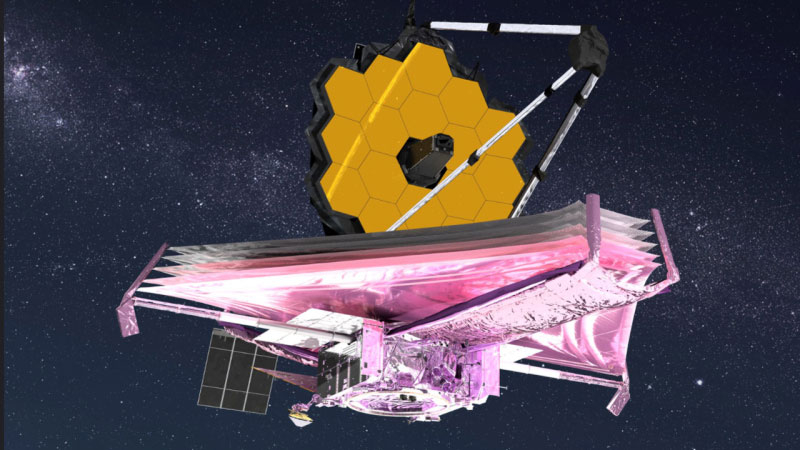The greatest cosmological mystery of our time may be the result of measurement error, say scientists led by a researcher at the University of Chicago. Webb’s keen eyes helped extract data from the observations that send Hubble’s intensity into the range of measurement uncertainty. The article about the discovery has not yet been peer-reviewed, but its conclusions are interesting.

Artist’s rendering of the James Webb Space Telescope. Image source: NASA
About a hundred years ago, Edwin Hubble measured the speed at which galaxies are moving away and found that they were flying apart and the Universe was expanding. Later, something surprising was revealed: using calculations based on the same laws of physics, the proportionality coefficient in the calculations – the so-called Hubble constant, which depends on the distance of the object, differs significantly depending on the starting point for the calculations. If we measure and count from the beginning of the Universe (based on measurements of the cosmic microwave background radiation), then the Hubble constant is one (66.93 ± 0.62 (km/s)/Mpc), and if we start counting from the Earth and further, then it is different (73.24 ± 1.74 (km/s)/Mpc). Almost 8% of the difference is not an error, it’s different physics, and this shouldn’t happen in nature.
Wendy Freedman’s group at the University of Chicago used Webb’s data as the most accurate to date. Scientists analyzed the light from Type Ia supernovae in 10 nearby galaxies, called standard candles for their predictable brightness and dynamics. They then used three other methods to determine the speed of escape of these galaxies: from the state of red giants, from carbonaceous J-class stars, and from Cepheids—variable stars with known and predictable characteristics.
All this was previously done by the Hubble telescope and other instruments, so all hope was for the increased accuracy of measurements using Webb’s infrared instruments. And the result justified itself! The first two methods (giants and J-stars) gave indicators close to the “relic” one: 69.85 (km/s)/Mpc and, accordingly, 67.96 (km/s)/Mpc. Only the Cepheids left the orderly row, showing a value of 72.04 (km/s)/Mpc. On average, the Hubble constant measured by Webb was 69.96 ± 1.05 (km/s)/Mpc, which is close to the Standard Model and virtually eliminates the contradiction or need for the Hubble tension. There are no contradictions in the modern cosmological model, scientists say. In any case, they took a step towards their elimination.